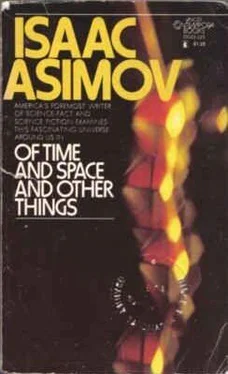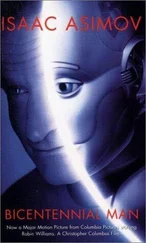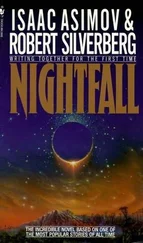Isaac Asimov - Of Time and Space and Other Things
Здесь есть возможность читать онлайн «Isaac Asimov - Of Time and Space and Other Things» весь текст электронной книги совершенно бесплатно (целиком полную версию без сокращений). В некоторых случаях можно слушать аудио, скачать через торрент в формате fb2 и присутствует краткое содержание. Год выпуска: 1972, ISBN: 1972, Издательство: Lancer Books, Жанр: Прочая научная литература, на английском языке. Описание произведения, (предисловие) а так же отзывы посетителей доступны на портале библиотеки ЛибКат.
- Название:Of Time and Space and Other Things
- Автор:
- Издательство:Lancer Books
- Жанр:
- Год:1972
- ISBN:ISBN: 0-447-33023-3
- Рейтинг книги:4 / 5. Голосов: 1
-
Избранное:Добавить в избранное
- Отзывы:
-
Ваша оценка:
- 80
- 1
- 2
- 3
- 4
- 5
Of Time and Space and Other Things: краткое содержание, описание и аннотация
Предлагаем к чтению аннотацию, описание, краткое содержание или предисловие (зависит от того, что написал сам автор книги «Of Time and Space and Other Things»). Если вы не нашли необходимую информацию о книге — напишите в комментариях, мы постараемся отыскать её.
Of Time and Space and Other Things — читать онлайн бесплатно полную книгу (весь текст) целиком
Ниже представлен текст книги, разбитый по страницам. Система сохранения места последней прочитанной страницы, позволяет с удобством читать онлайн бесплатно книгу «Of Time and Space and Other Things», без необходимости каждый раз заново искать на чём Вы остановились. Поставьте закладку, и сможете в любой момент перейти на страницу, на которой закончили чтение.
Интервал:
Закладка:
Now Arabic numerals reached Europe in the High Middle Ages, and once they came on the scene the Roman numerals were completely outmoded. They lost all pos sible use, so infinitely superior was the new Arabic nota tion. Until then who knows how many reams of paper were required to explain methods for calculating with Roman numerals. Afterward the same calculations could be performed with a hundredth of the explanation. No knowledge was lost only inefficient rules.
And yet five hundred years after the deserved death of the Roman numerals, Pike still included them and ex pected his readers to be able to translate them into Arabic numerals and vice versa even though he gave no instruc tions for how to manipulate them. In fact, nearly two hun 138 dred years after Pike, the Roman numerals are still being taught. My little daughter is learning them now.
But why? Where's the need? To be sure, you will find Roman numerals on cornerstones and gravestones, on clockfaces and on some public buildings and documents, but it isn't used for any need at all. It is used for show, for status, for antique flavor, for a craving for some kind of phony classicism.
I dare say there are some sentimental fellows who feel that knowledge of the Roman numerals is a kind of gate way to history and culture; that scrapping them would be like knocking over what is left of the Parthenon, but I have no patience with such mawkishness. We might as well suggest that everyone who learns to drive a car be required to spend some time at the wheel of a Model-T Ford so he could get the flavor of early cardom.
Roman numerals? Forget iti-And make room instead for new and valuable material.
But do we dare forget things? Why not? We've forgot ten much; more than you imagine. Our troubles stem not from the fact that we've forgotten, but that we remember too well; we don't forget enough.
A great deal of Pike's book consists of material we have imperfectly forgotten. That is why the modern arithmetic book is shorter than Pike. And if we could but perfectly forget, the modern arithmetic book could grow still shorter.
For instance, Pike devotes many pages to tables-pre sumably important tables that he thought the reader ought to be familiar with. His fifth table is labeled "cloth meas ure.29 Did you know that 2% inches make a "nail"? Well, they do. And 16 nails make a yard; while 12 nails make an ell.
No, wait a while. Those 12 nails (27 inches) make a Flemish ell. It takes 20 nails (45 inches) to make an English ell, and 24 nails (54 inches) to make a French ell. Then, 16 nails plus 1% inches (371/5 inches) make a Scotch ell.
Now if you're going to be in the business world and import and export cloth, you're going to have to know all those ells-unless you can figure some way of getting the ell out of business.
Furthermore, almost every piece of goods is measured in its own units. You speak of a firkin of butter, a punch of prunes, a fother of lead, a stone of butcher's meat, and so on. Each of these quantities weighs a certain number of pounds (avoirdupois pounds, but there are also troy pounds and apothecary pounds and so on), and Pike carefully gives all the equivalents.
Do you want to measure distances? Well, how about this: 7 92/100 inches make I link; 25 links make I pole; 4 poles make I chain; 10 chains make I furlong; and 8 furlongs make I mile.
Or do you want to measure ale or beer-a very com mon line of work in Colonial tim6s. You have to know the language, of course. Here it is: 2 pints make a quart and 4 quarts make a gallon. Well, we still know that much anyway.
In Colonial times, however, a mere gallon of beer or ale was but a starter. That was for infants. You had to know how to speak of man-sized quantities. Well, 8 gallons make a firkin-that is, it makes "a firkin,of ale in Lon don." It takes, however, 9 gallons to make "a firkin of beer in London." The intermediate quantity, 81/2 gallons, is marked down as "a firkin of ale or beer"-presumably outside of the environs of London where the provincial citizens were less finicky in distinguishing between the two.
But we go on: 2 firkins (I suppose the intermediate kind, but I'm not sure) make a kilderkin and 2 kilderkins make a barrel. Then ll/z barrels make I hogshead; 2 bar rels make a puncheon; and 3 barrels make a butt.
Have you got all that straight?
But let's try dry measure in case your appetite has been sharpened for something still better.
Here, 2 pints make a quart and 2 quarts make a pottle.
(No, not bottle, pottle. Don't tell me you've never heard of a pottle!) But let's proceed.
Next, 2 pottles make a gallon, 2 gallons make a peck, and 4 pecks make a bushel. (Long breath now.) Then 2 bushels make a strike, 2 strikes make a coom, 2 cooms make a quarter, 4 quarters make a chaldron (though in the demanding city of London, it takes 41/2 quarters to make a chaldron). Finally, 5 quarters make a wey and 2 weys make a last.
I'm not making this up. I'm copying it right out of Pike, page 48.
Were people who were studying arithmetic in 1797 ex pected to memorize all this? Apparently, yes, because Pike spends a lot of time on compound addition. That's right, compound addition. . You see, the addition you consider addition is just 44 simple addition." Compound addition is something stronger and I will now explain it to you.
Suppose you have 15 apples, your friend has 17 apples, and a passing stranger has 19 apples and you decide to make a pile of them. Having done so, you wonder bow many you have altogether. Preferring not to count, you draw upon your college education and prepare to add 15 + 17 + 19. You begin with the units column and find that 5 + 7 + 9 = 21.;You therefore divide 21 by 10 and find the quotient is 2 plus a remainder of I,. so you put down the remainder, 1, and carry the quotient 2 into the tens col- I seem to hear loud yells from the audience. "What is all this? comes the fevered demand. "Where does this 'divide by 10' jazz come from?"
Ah, Gentle Readers, but this is exactly what you do whenever you add. It is only that the kindly souls who devised our Arabic system of numeration based it on the number 10 in such a way that when any two-digit num ber is divided by 10, the first digit represents the quotient and the second the remainder.
For that reason, having the quotient and remainder in our hands without dividing, we can add automatically. If the units column adds up to 21, we put down I and carry 2; if it bad added up to 57, we would have put down 7 and carried 5, and so on.
The only reason this works, mind you, is that in adding a set of figures, each column of dicits (starting from the right and working leftward) represents a value ten times as great as the column before. The rightmost column is units, the one to its left is tens, the one to its left is hun dreds, and so on.
It is this combination of a number system based on ten and a value ratio from column to column of ten that makes addition very simple. It is for this reason that it is, as Pike calls it, "simple addition."
Now suppose you have I dozen and 8 apples, your friend has 1 dozen and 10 apples, and a passing stranger has I dozen and 9 apples. Make a pile of those and add them as follows:
I dozen 8 units
1 dozen 10 units
1 dozen 9 units
Since 8 + 10 + 9 = 27, do we put down 7 and carry 2? Not at all! The ratio of the "dozens" column to the (tunits" column is not 10 but 12, since there are 12 units to a dozen. And since the number system we are using is based on I 0 and not on 12, we can no longer let the dicits do our thinking for us. We have to go long way round.
If 8 + 10 + 9 - 27, we must divide that sum by the ratio of the value of the columns; in this case, 12. We find that 27 divided by 12 gives a quotient of 2 plus a remain der of 3, so we put down 3 and carry 2. In the dozens column we get I + I + 1 + 2 = 5. Our total therefore is 5 dozen and 3 apples.
Читать дальшеИнтервал:
Закладка:
Похожие книги на «Of Time and Space and Other Things»
Представляем Вашему вниманию похожие книги на «Of Time and Space and Other Things» списком для выбора. Мы отобрали схожую по названию и смыслу литературу в надежде предоставить читателям больше вариантов отыскать новые, интересные, ещё непрочитанные произведения.
Обсуждение, отзывы о книге «Of Time and Space and Other Things» и просто собственные мнения читателей. Оставьте ваши комментарии, напишите, что Вы думаете о произведении, его смысле или главных героях. Укажите что конкретно понравилось, а что нет, и почему Вы так считаете.












